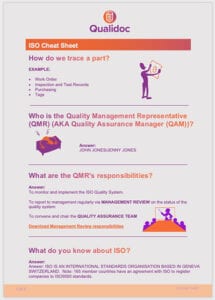Excerpt from an article by Jean White first published in ASQ Six Sigma Forum magazine: “Your Opinion”, August, 2014.
”Training is
everything. The
peach was once a
bitter almond; the cauliflower nothing
but cabbage with a college education.”
–Mark Twain in Pudd’nhead Wilson’s
Calendar, 1894
Organizations entering the quality system arena through standards such as ISO 9000 and AS9100 might find that, although training is not everything, they will need to increase their training resources. While senior executives acknowledge the need for training, they might not regard it in the same critical light as business processes such as marketing or production.
Inadequate or neglected training, however, can have a serious effect on the certification status of the organization. Standards
boards such as the American National Accreditation Board
and the Standards Council of Canada have warned that
“incomplete reports will no longer be tolerated”—“incomplete” meaning, among other things, nonconformance reports closed out without sufficient root cause analyses. The Boards suggest that unsatisfactory training could be a root cause along with ambiguous procedures and working instructions. They are adamant that they will not accept root causes based
on “employee error, human error, operator error or anyone else who
made an error.” Given these constraints, it can be difficult and time consuming to decide what sort of training is required. Above all, a quality system should be a healthy discipline, not a straitjacket.
Some training needs might be obvious, such as recognizing counterfeit or suspect parts, different reporting requirements, new documentation or processes, or the difference between containment, and corrective and preventive action. Others are more subtle, such as introducing unfamiliar concepts and obligations to employees who often believe the quality system is management’s business.
Employees must be confident about their responsibility and authority, and be committed to the success of the quality system. Clearly, the certification bodies and standards boards expect the certification audits to reflect this commitment. Employees at all levels should be able to answer qualified questions about their work, especially if they are questioned in unfamiliar circumstances such as the assessment for certification. Consider an example from the draft ISO 9001:2015 (ISO underlined words for emphasis):
Clause 5.1—Leadership and commitment:
“involving, directing and
supporting persons to contribute
to the effectiveness of the quality
management system.”
Lack of training can show up during the audit when the assessor might ask anyone questions such as: “Can you show me your working instructions?” A relaxed, well-trained employee will refer the assessor to the master document list (also known as the quality
system document index) and the relevant documents without floundering.
